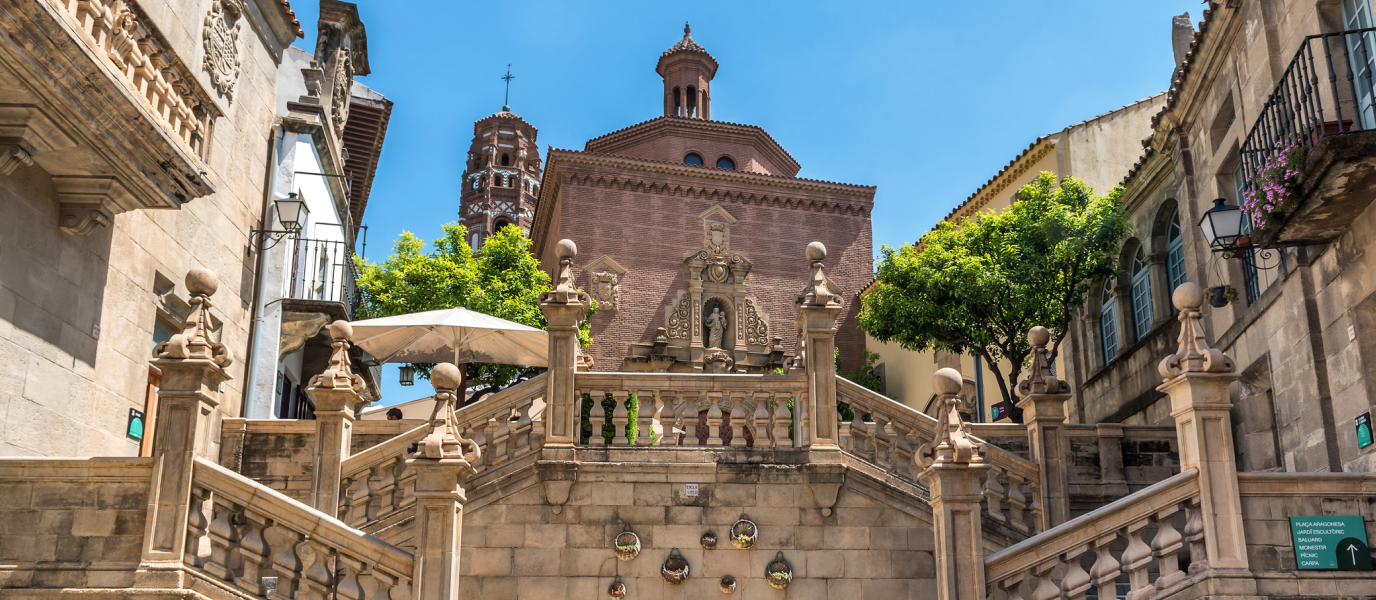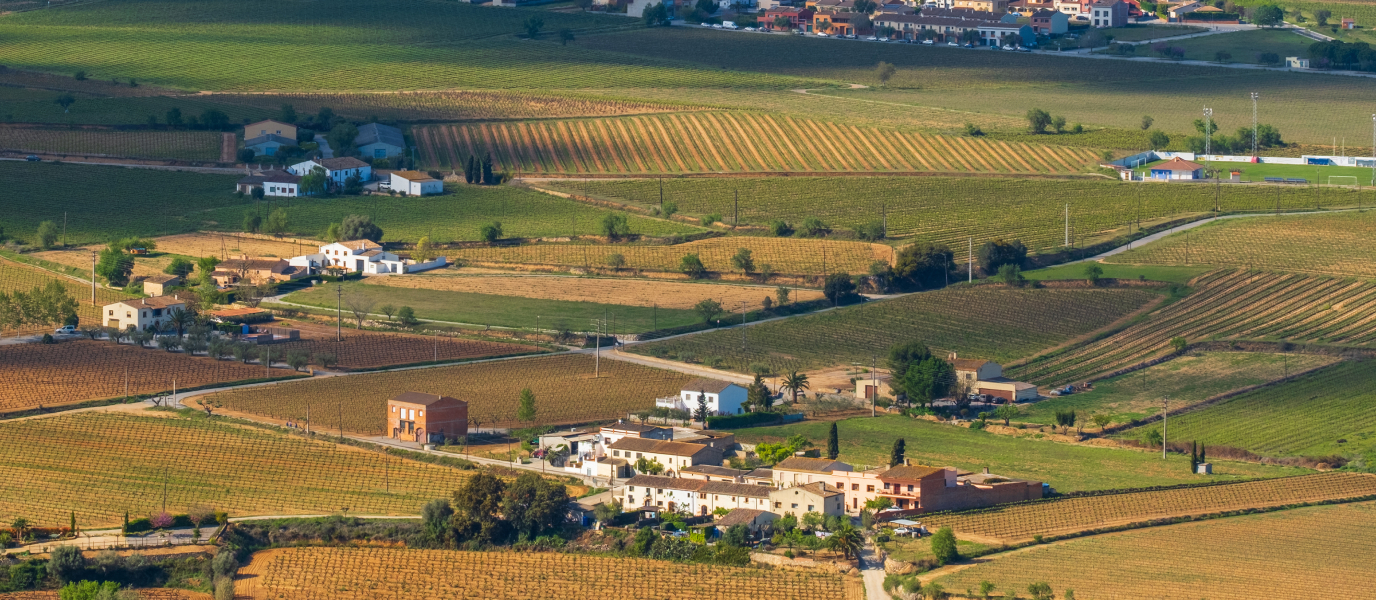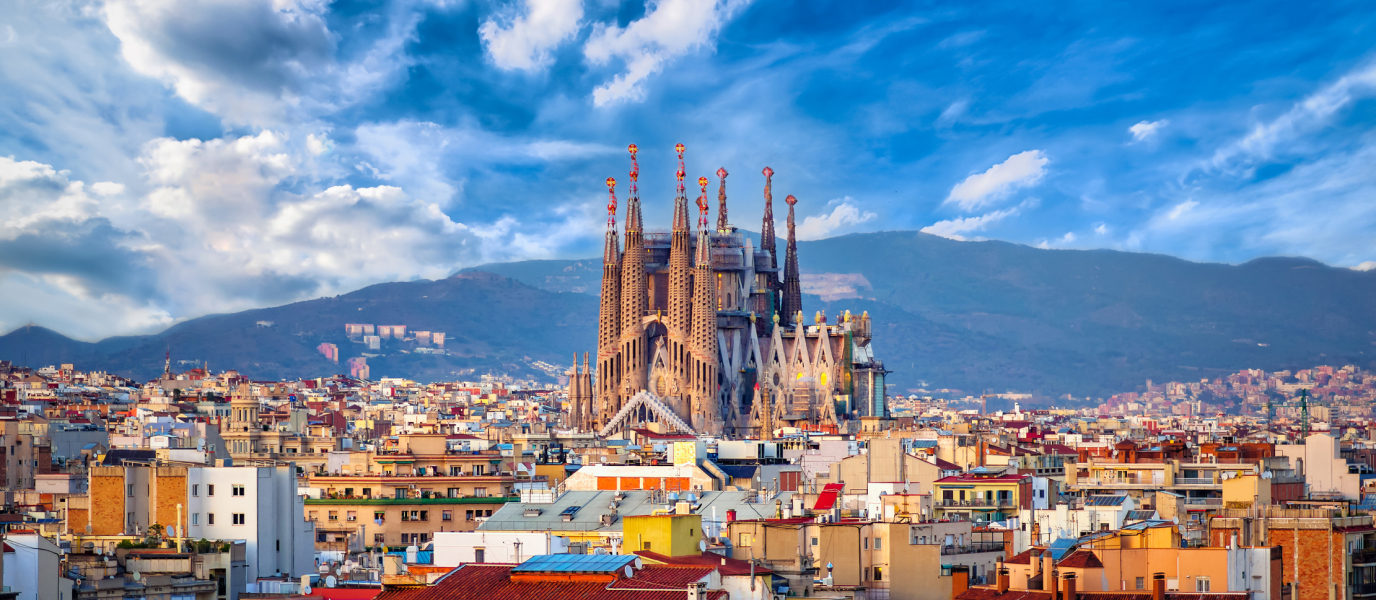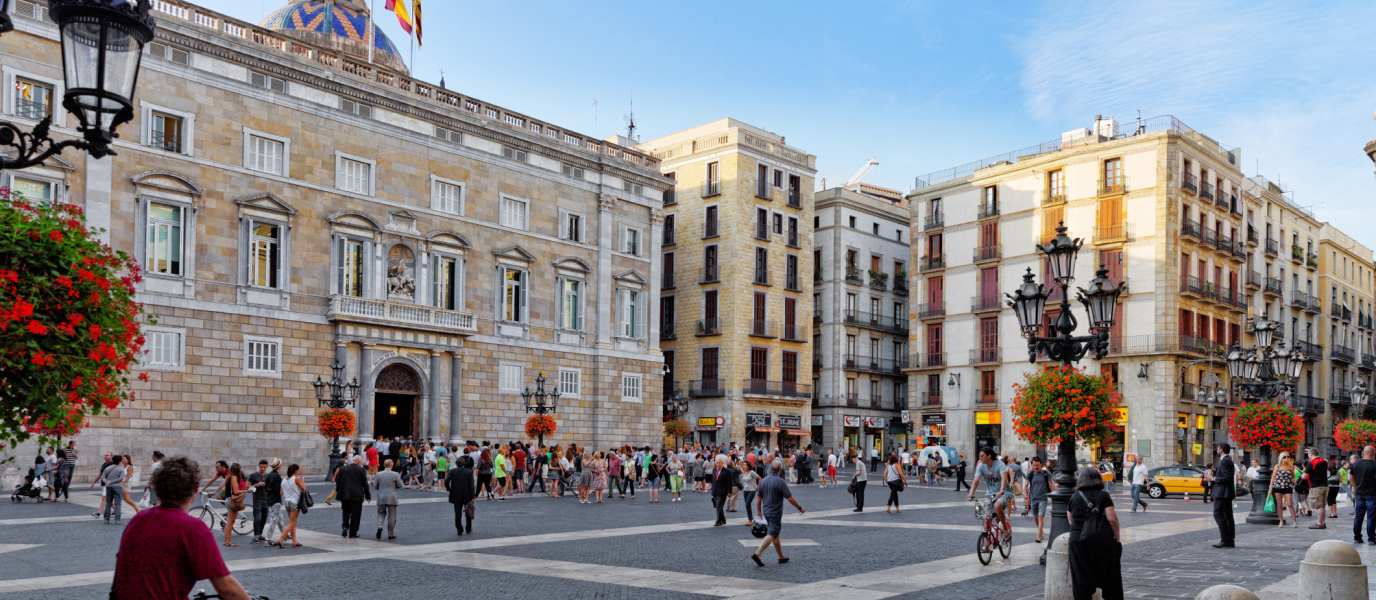When modern-day travellers visit tourist attractions created almost one hundred years ago, it’s impossible not to be amazed by the imaginations of their creators. That’ll be how you feel when you visit the Poble Espanyol (Pueblo Español, in Spanish, literally the Spanish Village), because this large area located near the Fountains of Montjuïc was designed in 1929 (just as the fountains were). As you’ll already have discovered by visiting other architectural attractions in the city, this wasn’t the only project that was completed in the same year that the International Exposition of Barcelona took place.
This event in 1929 was a real boost for the city, just as the previous World Fair had been in 1888. This exhibition was built on the mountain of Montjuïc on an area of more than one hundred hectares, and from it we’ve inherited buildings that show us just what the new architectural and artistic trends were at that time.
Why was the Poble Espanyol built?
You might be interested to know that the Exposition of 1929 was opened by King Alfonso XIII, who was accompanied by the then Prime Minister, Miguel Primo de Rivera, and 200,000 people who came along to see the fairgrounds. One of the new attractions unveiled was the Poble Espanyol, a space that was intended to gather together the essence of all of the communities that make up the country, in one place. These days, its aim hasn’t changed much, but the kind of visitor has, as has the nature of their experience.
An international visitor, who isn’t as familiar with Spanish architecture, can, in just one place, get an excellent impression of Spanish tradition, art, architecture, and even the country’s fiestas.
Well researched
A project of this kind, which was going to be displayed at an international exposition, had to be properly researched if it was going to achieve the effect it was going for. With that in mind, the modernist architect Puig i Cadafalch, and his collaborators Ramon Reventós and Francesc Folguera, along with the artists Xavier Nogués and Miquel Utrillo, decided to explore Spain, in search of the country’s essence. They visited 1,600 places, each of which contributed to the creation of a village that would incorporate a tiny bit of each one of them: a Catalan Romanesque monastery, a traditional Andalusian neighbourhood, a maze of alleyways that hark back to the Moorish past, a main square… The 117 buildings they recreated were done to scale.
The themed spaces are organised into four geographical areas, so it’s very easy to get an idea of the defining features of each one. Where would you like to start your stroll? You can choose between the Mediterranean, the north, the centre and the south of Spain. It’s quite the novelty to be able to, in just a few short minutes, pass from Asturias’ most recognisable corners to a white Andalusian village, or from Santiago de Compostela to the Island of Majorca.
Feeling Spain!
As time has gone by, this attraction has had to update itself and keep up with trends and the new needs of its visitors. They’ve introduced new technologies that have made the experience more educational and enjoyable for young people. The different themed areas include a space that allows you to discover the landscapes, gastronomy and traditions of each through audiovisual resources. You’ll be able to identify them by the words ‘Feeling Spain!’ They’re the fastest way of getting to know the heart and soul of each of these corners of Spain.
Another thing that awakens the senses is the space called Fiesta, because, let’s face it, there’s nothing more Spanish than a good party. This multimedia facility was unveiled in 2018. It occupies 150 m2 and stands 7 metres tall, allowing visitors to discover well-loved celebrations such as Semana Santa (Holy Week), La Tomatina festival, the Castells (human towers) or San Fermín.
Art and crafts in the Poble Espanyol
As a complement to the architecture, there’s also plenty of art and crafts in the village, two things at which Spain excels, both nationally and internationally. A building was reserved especially to display them—the Museo Fran Daurel—exhibiting famous contemporary artists like Dalí, Picasso or Miró. The museum is free to visit with your ticket. Don’t miss the garden where you can admire the 36 sculptures dotted around the area, 27 of which are by contemporary artists.
But as well as admiring finished works of art, you can also see them in progress. There are 20 artisans creating beautiful objects within the Poble Espanyol itself. It’s like a live demonstration of the country’s most common crafts. Time will run away with you as you watch the professionals creating with glass and leather or working on a Spanish guitar. And you know what the best part is? If you fall in love with a piece, you can purchase it and take it home with you.
Before you leave, make sure you take in the setting, because the incredible location on the mountain of Montjuïc offers beautiful views. Don’t tell anyone, but the best views are from the viewpoint of the Romanesque monastery.
Visits to the Poble Espanyol
You can visit this curious spot however you like but it is worth, at least, renting an audio guide that will help you discover facts that you’d otherwise never know. It’s available in eight languages (Catalan, Spanish, English, Italian, French, Russian, Hebrew and German), so you’ll be sure to find the right one for you. If you want something a little more interactive there are also guided tours around many of the buildings, but you will need to book in advance.
A visit to the Poble Espanyol is one of Barcelona’s most popular activities for families. Parents consider it a safe, educational space for their little ones, who will easily learn how to identify the features of Baroque, Gothic, Romanesque and Mudéjar architecture.
Children can also take part in the Joc del Sarró, a game which lets them become detectives for the day, solving the mysteries dotted around the village. Children under nine should be accompanied by an adult.
When you’ve finished visiting the park, take advantage and discover the natural surroundings of the Montjuïc mountain.







































































